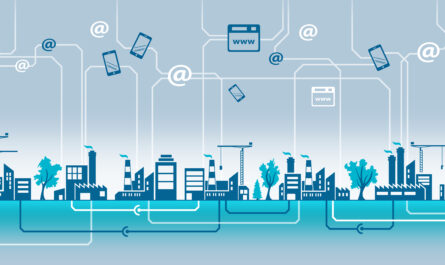Buildings around the world are undergoing a technological revolution as smarter and more efficient designs take shape. Integrating automated systems and the internet of things, smart buildings offer improvements in areas like energy use, safety and security, and tenant experience.
What are the Key Features of a Smart Building?
Smart buildings leverage different technologies and digital solutions to create optimized, sustainable structures. Some of the main components of a smart building include:
Smart HVAC and Lighting Controls
Smart Building have automated heating, ventilation, air conditioning and lighting systems that can be controlled and adjusted remotely. Sensors monitor occupancy and environmental factors to intelligently manage energy usage for optimal efficiency. Lights and temperatures adjust based on presence, outside conditions and time of day to reduce waste.
Advanced Security and Access Systems
Keycard entry, video surveillance cameras, intrusion detection and analytics provide enhanced security monitoring. Access permissions are flexible and tenants can monitor the building from their mobile devices. Visitor management systems streamline registration.
IoT Integration and Sensors
Sensors throughout the building detect factors like moisture, air quality and more to inform maintenance needs. Wireless technologies connect all smart devices, from locks to thermostats. Data from these internet of things technologies allow for predictive maintenance and issues to be addressed proactively.
Data Analytics and Dashboard Reporting
Building management systems aggregate and analyze data from sensors and systems. Visual dashboards provide transparency into performance metrics like energy consumption trends over time. Insights help maximize efficiencies and cut costs.
Benefits of Smart Building Implementation
Beyond just operational optimizations, Smart Building deliver widespread advantages for owners, tenants and the environment. Some key benefits include:
Reduced Energy Consumption and Costs
Intelligent control of HVAC, lighting and other energy-hungry systems leads to meaningful energy savings. Automatic adjustments eliminate wasteful usage from unoccupied or daylight spaces. Long-term, these efficiencies lower utility expenditures.
Enhanced Occupant Experience
Smart access systems, environmental comfort and integrated services improve tenant satisfaction. Conveniences like remote control of settings boost productivity too. Visitors have touchless, straightforward registration as well.
Improved Safety and Security
Round-the-clock monitoring and quick emergency notification keep occupants safe. Automated response systems can pinpoint incidents faster than humans alone. Digital trails also aid investigations and insurance claims processing.
Lower Maintenance Requirements
Real-time system diagnostic data from IoT devices alerts staff to maintenance needs before they worsen. Predictive analytics help schedule repairs proactively versus reactive fixes after issues arise. Equipment lasts longer too.
Sustainability and Green Building Certifications
Energy savings, reduced carbon footprint and superior indoor environments support sustainability initiatives. Smart features address certification prerequisites for some green building standards like LEED.
Barriers to Overcome in Adoption
While the advantages are clear, full-scale smart building implementation faces challenges that will take time and coordination to overcome:
Higher Upfront Costs
Integrating new technologies requires considerable initial investment in equipment, installation and integration that deters some owners. But energy savings and other returns make it cost-effective in the long-run.
Interoperability Between Systems
Getting all smart components, old and new, to seamlessly communicate is an ongoing hurdle. Standards evolve but fragmentation remains an obstacle for seamless control.
Security and Data Risks
As more systems go digital, cyberthreats pose risks demanding continual protection updates. Ensuring tenant privacy amid data collection also requires policies and transparency.
Resistance to Change
Owners hesitate to disrupt existing buildings and operations with major upgrades. Tenants too prefer consistent experiences over adjustments to smart transformations. Education addresses these concerns.
The Future of Smart Buildings
While the technology still matures, smart buildings are emerging as the new normal over the next decade. As costs decline, examples that prove the compound benefits will inspire accelerated adoption rates industry-wide. Standardization efforts and new training programs support architects, engineers and managers through the paradigm shift. Smart cities too are driving demand through strict new construction codes. Ultimately, businesses and inhabitants alike will come to expect smart features and reap their numerous advantages in any building they occupy.



